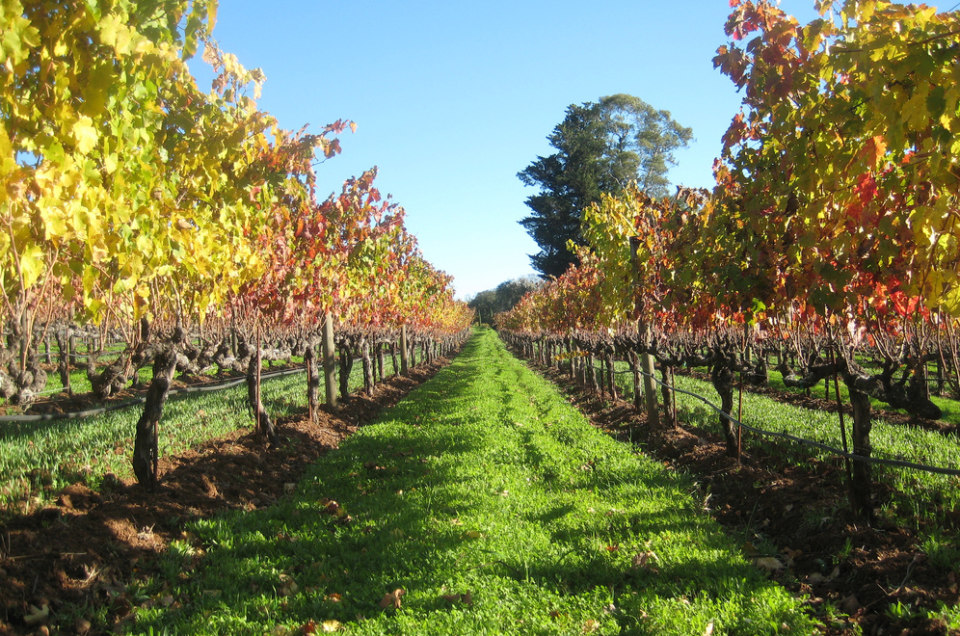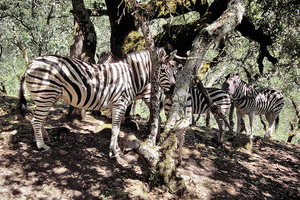From cars (and drivers) to restaurants, spas and luxury resorts, everything is going green! And what better place for “greening” than one of the country’s most protected agricultural areas: Wine country. Both Sonoma and Napa are brimming with hotels, vineyards, spas and restaurants that know more about sustainable living than Al Gore. And yet, the greening of wine country began long before “An Inconvenient Truth.”
Locals, especially in Sonoma, have long been part of the “granola” subset – mulching their compost, noshing on vegan cookies and preserving the area’s majestic redwood forests and 76 miles of coast. Hiking, horseback riding and kayaking take precedence over DS, Wii and surfing the Web.
“Generations of Sonomans have recognized that taking care of the land means the land will take care of us,” says Tim Zahner, director of public relations and marketing at Sonoma County’s Tourism Bureau.
“Though more and more land has been developed as vineyards, Sonoma County has been a farming and grape region for hundreds of years. Our wine grape growers have long realized that what goes into the ground ends up in the bottle.”
Take Benziger Winery, for example. As a biodynamic vineyard, Benziger had to meet the requirements for certified organic farming (the farm had to be free of synthetic pesticides and fertilizers for at least three years) and generate at least 80 percent of their own biodynamic feed from the farm itself. So instead of bringing in “organic” feed, fertilizers and other materials (which may have to travel across continents and burn petrochemicals on the way), farm inputs arise from within the farm itself.
“This practice involves creating an ecosystem and it requires serious commitment on the part of the producer,” says Jim Fullmer, director of Demeter, the main certifying body for biodynamic growers. “It isn’t something that can happen overnight.” That commitment also requires biodynamic farmers to plant, prune and harvest according to the phases of the moon, taking advantage of the gravitational pull to move minerals from the roots of the vine into the grape.
I traversed the winery’s 45-acres of vines on a tram, which runs on biodiesel fuel, of course, taking in the beautiful gardens, insectaries, olive groves and wetlands. It’s a veritable all-you-can-eat buffet for birds, bees and insects. As it turns out, that buffet is required for a biodynamic farm to thrive.
“A balanced system of predatory and prey relationships in and around the vineyard helps eliminate pesticides and create even stronger, more diverse systems,” explains Chris Benziger, co-founder of the winery. For example, Santa Barbara daisies, members of the sunflower family, attract wasps that eat the white flies that attack grapevines. “Plus, with biodynamics, we feed grapes from the soil so the roots are forced to grow deep. The deeper the roots go, the more minerals they pick up and that gives the wine a certain authenticity and sense of place,” he says.
It’s just that sense of place that lured El Dorado’s Kitchen to cultivate a unique relationship with the vineyard, growing biodynamic fruits and vegetables on the same properties with grapes cultivated for Benziger wines. Of course, the restaurant features several Benziger wines on their wine list, taking food and wine pairing to a whole new level. And it’s part of the farm-to-table philosophy that embodies the spirit of Sonoma.
Other vineyards that are committed to biodynamic farming practices include Porter Creek and Quivira (in Sonoma) and Grgich Hills, Robert Sinskey and Araujo (in Napa).
When you’re done stretching your muscles, a slew green spas await you. One of the most interesting is Osmosis in Sebastopol, which offers unique cedar enzyme baths (think gigantic tubs filled with hot wood chips — no water required). Apparently, these baths are very common in Japan, but only one spa in North America currently offers the full Japanese experience, complete with meditation gardens, cultural landscaping and pre-treatment digestive tea. Take note: It’s not for the claustrophobic or squeamish.
Unless you’re close to your spa mate, you may want to forgo a treatment for two. Enzyme baths are side-by-side, buck naked, and in a huge vat of hot, wet wood chips. Therapists cover your forehead with damp, cool washcloths (since you can’t move because your entire body, including your hands, is buried in lava hot chips), but ultimately you have to un-bury yourself to take a deep breath. Though some swear by enzyme baths, for me the experience was a little too heated. In fact, I cut the bath short and headed straight for the meditation gardens to await my massage therapist.
On to greener pastures …
Nestled on 400 acres of wine country, Peter Lang’s Safari West may be the closest you can get to Africa without a passport. It’s not a zoo. It’s not a theme park. And it certainly isn’t a standard hotel. It’s a wildlife preserve that doubles as an African bed and breakfast – views of giraffes and lemurs included. In fact, the preserve is home to more than 400 exotic mammals and birds like cheetah, cape buffalo, springbok, eland and wildebeest.
Lang raised a lion cub at age 14 and founded Safari West as a way to be close to the animals that were part of his childhood. His father was television and film director Otto Lang, whose credits include “Daktari,” “Flipper” and “Sea Hunt,” among others. Animals are in his blood. They’re his passion. He has to be near them. And I can see why.
One night, around 11 p.m., I joined a special “tour” to see the giraffes up close. They weren’t the least bit shy, brushing their gigantic tongues right over my hand to get to the Smorgasbord of grass and hay. They just nuzzled in close and somehow charmed me into giving them food.
Not interested in snoozing among the lions and zebra? Consider reserving a green “studio” at Solage in Calistoga. There you’ll find hemp curtains, wool throws, stone countertops and pebbled showers – all without giving up WiFi, iPod hookups or cable TV. The resort’s 130-foot pool uses an ozone-based system instead of chlorine to keep water clean.
“Our goal was to appeal to the growing demographic of Gen Xers who are looking for affordable luxury,” says Mark Harmon, CEO of Auberge Resorts and mastermind behind the Solage concept. And environmental sustainability is an integral part of that culture.
Solage pushes the envelope with natural heating and cooling systems, tapping the geothermal springs deep beneath the property for radiant energy to heat the treatment rooms and soaking pools and using passive cooling to cool the buildings. The resort boasts recycled materials, low-VOC paint and energy rooms that use natural light and energy-efficient fixtures.
No matter what your pleasure, the options for green dining and lodging are growing exponentially. As you travel from Sonoma to Calistoga – and Napa in between – you’ll get a fascinating look at the best in sustainable living. And you will, of course, be driving a hybrid.



